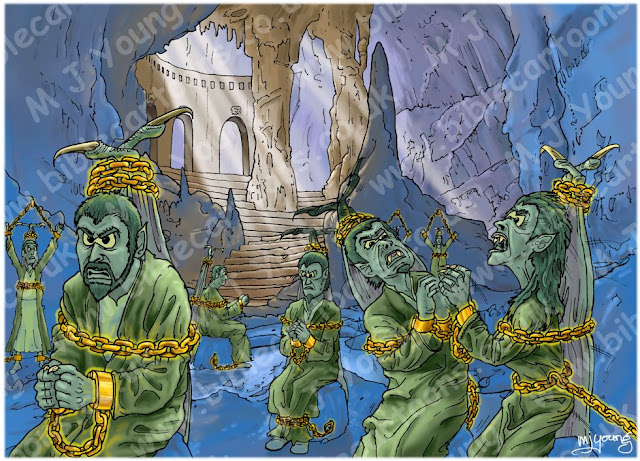Is the Book of Jude a Rip-Off of 2 Peter?
The Epistle of Jude is one of the shortest books of the Bible, but it is certainly not short on theology. Jude is a book of both hell-fire and damnation and spiritual encouragement. In only one chapter of twenty-five verses, the epistle addresses the fate of false teachers in vivid terms and gives the faithful a call to persevere in the face of doubt and persecution. These themes can be found elsewhere in the Bible, particularly in the New Testament. However, there are some rather striking similarities between Jude's epistle and the second chapter of 2 Peter that have led some to believe that one drew directly from the other.
From the get-go Jude seems to borrow straight from 2 Peter when he talks about "godless" teachers secretly slipping in among members of the church and spreading false doctrine (Jude 1:5). This echoes Peter's warning in 2 Peter chapter 2 verse one.
[1] But there were also false prophets among the people, just as there will be false teachers among you. They will secretly introduce destructive heresies, even denying the sovereign Lord who bought them -- bringing swift destruction on themselves.
Jude also uses the exact wording as 2 Peter 2 when he describes fallen angels being thrown into "gloomy darkness" as punishment for their rebellion (Jude 1:6 and 2 Peter 2:4).
From the get-go Jude seems to borrow straight from 2 Peter when he talks about "godless" teachers secretly slipping in among members of the church and spreading false doctrine (Jude 1:5). This echoes Peter's warning in 2 Peter chapter 2 verse one.
[1] But there were also false prophets among the people, just as there will be false teachers among you. They will secretly introduce destructive heresies, even denying the sovereign Lord who bought them -- bringing swift destruction on themselves.
Jude also uses the exact wording as 2 Peter 2 when he describes fallen angels being thrown into "gloomy darkness" as punishment for their rebellion (Jude 1:6 and 2 Peter 2:4).
Because apparently fallen angels look like winged Vulcan vampires
Jude 1:7 and 2 Peter 2:6 have to do with the destruction of Sodom and Gomorrah. Both Jude and Peter refer to the people of these cities as having been used as an example of what will happen to the ungodly.
Jude and Peter both write aggressively against false teachers, arguing that they speak blasphemy against what they know nothing about (2 Peter 2:11-12 and Jude 1:10). Both writers even go so far as to liken the false teachers to ignorant animals, moving on instinct rather than logical reason.
On the subject of animals, there is a brief mention of Balaam and his talking donkey in 2 Peter 2:16 and Jude 1:11.
Dreamworks did not do it first.
Jude and Peter go on to describe the false teachers and ungodly as being boastful, enticing, flatterers (Jude 1:16 and 2 Peter 2:18).
The similarities in the topics and wording are enough to make one suspect that Jude was directly inspired by Peter's writing. It's even more evident when you look at the listing of subjects. The Epistle of Jude follows the same topical pattern as the second chapter of 2 Peter. From the judgment of false teachers, to punished angels, to Sodom and Gomorrah, to the rejection of authority by the ungodly, Jude is right in line with 2 Peter throughout almost the entirety of his epistle.
The similarity of Jude to 2 Peter 2 has often been used as a means to argue that Peter was in fact the author of 2 Peter. The argument is that Jude would not have copied just anyone, but would have no doubt borrowed ideas from a well-known person of the time, and who was a bigger figure than Peter?
Other critics even turn this argument around and suggest that Peter (or whoever wrote 2 Peter) copied Jude. According to them, the author of Peter borrowed from Jude and simply added some material and used just enough of Enoch to suit his purposes.
It seems more likely to me that Jude simply wished to restate what was said in 2 Peter. The churches at the time were plagued by false teachers and skewed doctrine. The vivid imagery in 2 Peter 2 no doubt inspired Jude in his own dealings with these problems. In the same way a that a modern-day student uses material and ideas written by others to compose an essay, research paper or blog post, Jude perhaps wrote his epistle after searching the texts of Peter. Unfortunately, there were no MLA guidelines for citations back then, so 2 Peter's author went uncredited.
Quit copying me, bro. Quit copying ME, bro.





Comments
Post a Comment